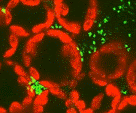Plant Pathology, Department of

Department of Plant Pathology: Faculty Publications
Document Type
Article
Date of this Version
2020
Citation
Front. Plant Sci. 11:56.
Abstract
The terms genome engineering, genome editing, and gene editing, refer to modifications (insertions, deletions, substitutions) in the genome of a living organism. The most widely used approach to genome editing nowadays is based on Clustered Regularly Interspaced Short Palindromic Repeats and associated protein 9 (CRISPR-Cas9). In prokaryotes, CRISPR-Cas9 is an adaptive immune system that naturally protects cells from DNA virus infections. CRISPR-Cas9 has been modified to create a versatile genome editing technology that has a wide diversity of applications in medicine, agriculture, and basic studies of gene functions. CRISPR-Cas9 has been used in a growing number of monocot and dicot plant species to enhance yield, quality, and nutritional value, to introduce or enhance tolerance to biotic and abiotic stresses, among other applications. Although biosafety concerns remain, genome editing is a promising technology with potential to contribute to food production for the benefit of the growing human population. Here, we review the principles, current advances and applications of CRISPR-Cas9-based gene editing in crop improvement. We also address biosafety concerns and show that humans have been exposed to Cas9 protein homologues long before the use of CRISPR-Cas9 in genome editing.


Comments
Copyright © 2020 El-Mounadi, Morales-Floriano and Garcia-Ruiz.
Open access
doi: 10.3389/fpls.2020.00056